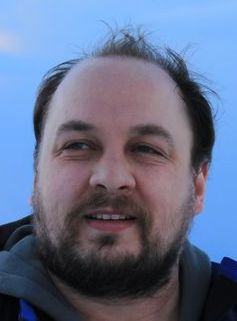|
|
|
Plenary speakersThe following distinguished scientists have agreed to give plenary talks on Monday 5th September 2016:
Quantum dot light sources: Present and future Recent advances in quantum dot growth technology have led to the commercialization of quantum dot lasers for telecommunications and other applications. Moreover, single quantum dots coupled to photonic crystal nanocavities have enabled the investigation of fundamental physics such as solid-state cavity-QED. In this presentation, we discuss the current state of the art of InAs/GaAs quantum dot lasers, and also future prospects including their application to hybrid silicon photonics and the development of ultra-small nanolasers. We also describe the demonstration of a single photon emission from a III-Nitride nanowire-based quantum dot operating above room temperature.
Scott A. Chambers, Physical and Computational Sciences Directorate, Pacific Northwest National Laboratory, Richland, WA, USA Functionality by design or default? Establishing meaningful structure-property relationships using MBE-grown oxide films As a broad class of materials, complex metal oxides exhibit an exceedingly diverse range of properties in every category – electronic, optical, magnetic and chemical. And since most metals across the periodic chart react with oxygen, the number of stable oxide compounds is enormous. These attributes create tremendous opportunity and significant challenges for the oxide film grower. Understanding what nucleates, and what the actual properties are, can be very challenging. As we shall see in this lecture, MBE plays a unique and powerful role in sorting out fact from fiction in this scientific enterprise, and has led to the discovery of some fascinating new materials systems.
Designing Dirac states in HgTe by MBE HgTe in its bulk state is a semimetal with an inverted band structure. This band inversion gives rise to the existence of previously unknown states of matter in this kind of material. HgTe is a very interesting system to investigate these new states since it can be MBE grown with high crystalline quality and changes in the growth influence the material properties profoundly. In this way HgTe can be used to realize Dirac Fermions in 1, 2 or 3 dimensions with the most prominent examples being the quantum spin Hall state, 3-dimensional topological insulators and Weyl Fermions. |

 Christoph Brüne, Physikalisches Institut, Universität Würzburg, Würzburg, Germany
Christoph Brüne, Physikalisches Institut, Universität Würzburg, Würzburg, Germany
